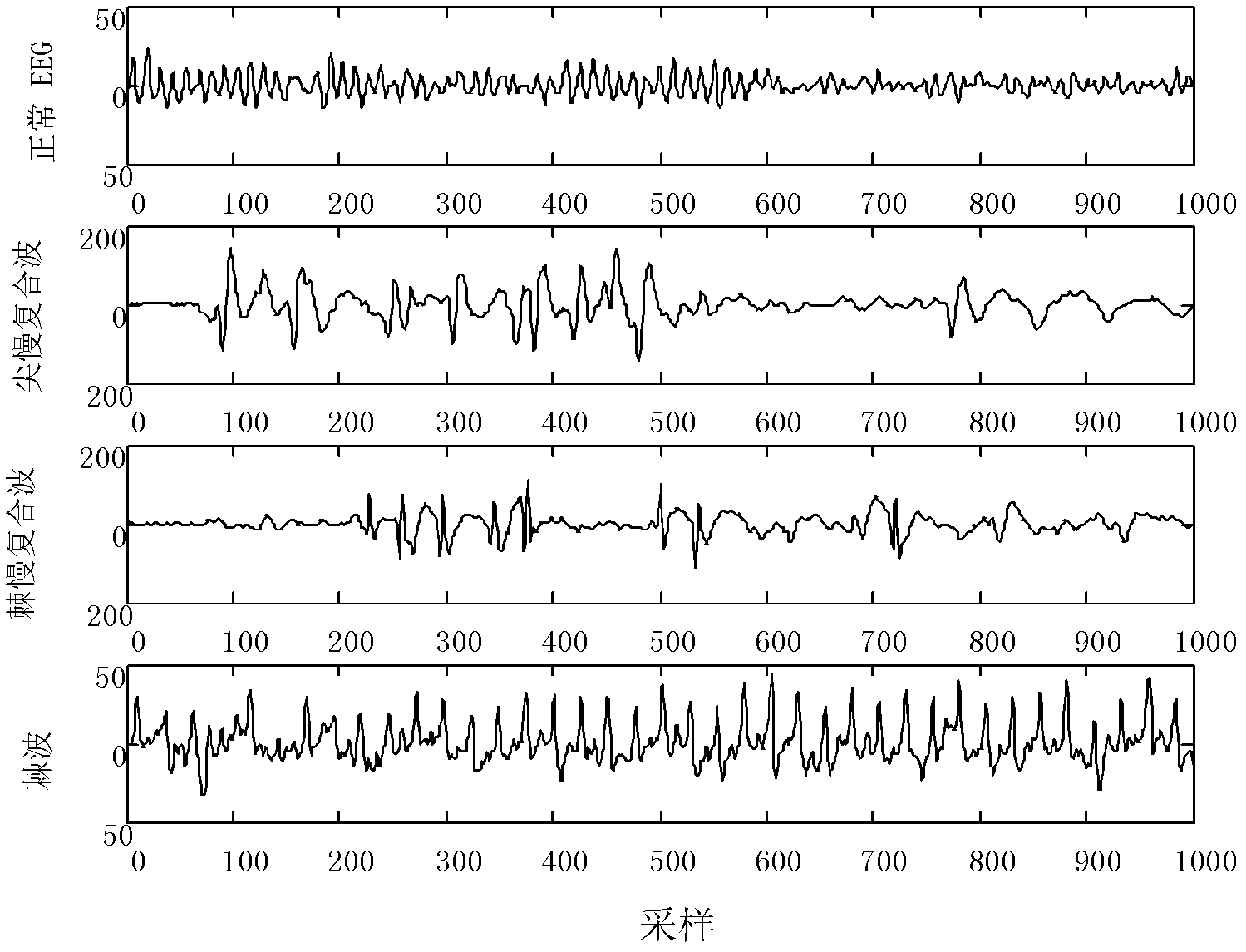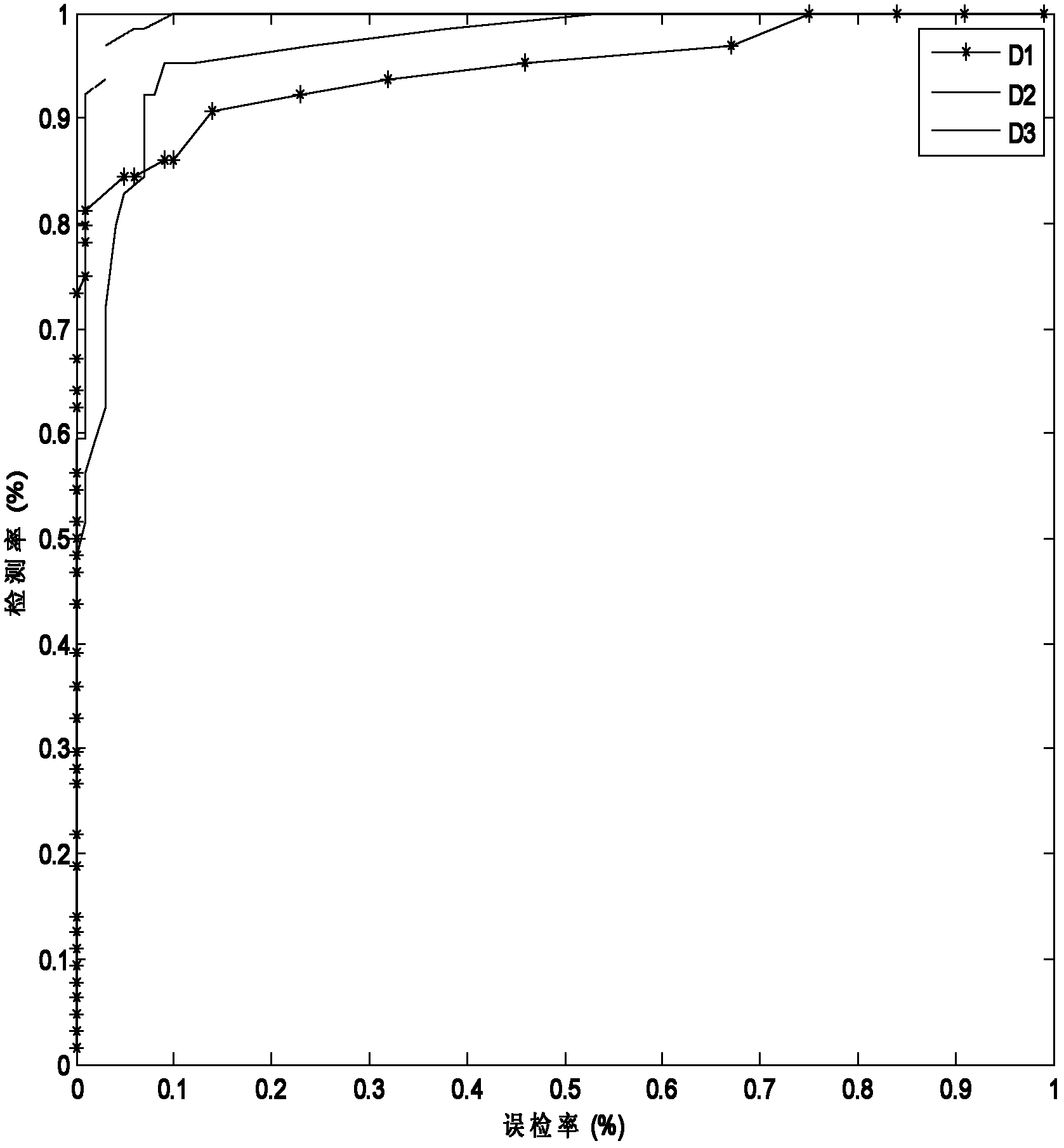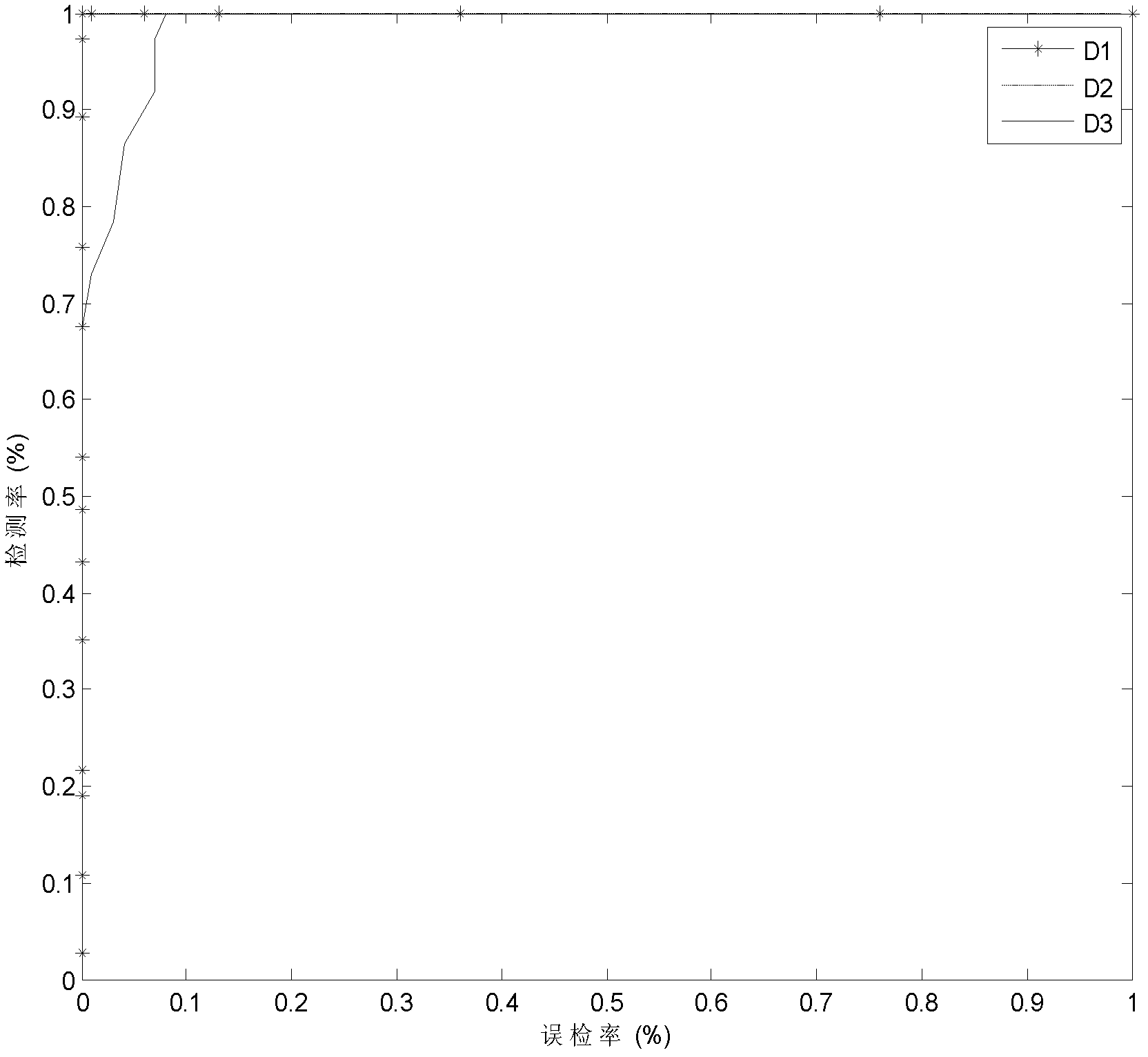Epilepsia electroencephalogram signal classified detection device and method
A technology of classification detection and EEG signal, applied in the directions of diagnostic recording/measurement, medical science, sensors, etc., can solve the problem of low detection rate of EEG activity in epilepsy
- Summary
- Abstract
- Description
- Claims
- Application Information
AI Technical Summary
Problems solved by technology
Method used
Image
Examples
Embodiment Construction
[0025] The device of the invention improves the detection rate of epileptic brain electricity by classifying and detecting epileptic brain electricity. figure 1 Examples of normal EEG and epileptic EEG signals.
[0026] The method for classification and detection of epilepsy EEG signals based on wavelet analysis and approximate entropy estimation realized by the device of the present invention is divided into three parts:
[0027] Perform wavelet analysis on collected normal EEG and epileptic EEG;
[0028] Perform approximate entropy calculation on each layer of detail signal after wavelet decomposition;
[0029] Classification detection using NEYMAN-PEARSON.
[0030] In the analysis of epileptic EEG, typical epileptic signals are divided into spike waves, sharp waves, spike-slow complexes, and sharp-slow complexes. Because they have different time-frequency characteristics, if the same detection standard is adopted without distinction, the optimal detection effect cannot b...
PUM
 Login to View More
Login to View More Abstract
Description
Claims
Application Information
 Login to View More
Login to View More - R&D
- Intellectual Property
- Life Sciences
- Materials
- Tech Scout
- Unparalleled Data Quality
- Higher Quality Content
- 60% Fewer Hallucinations
Browse by: Latest US Patents, China's latest patents, Technical Efficacy Thesaurus, Application Domain, Technology Topic, Popular Technical Reports.
© 2025 PatSnap. All rights reserved.Legal|Privacy policy|Modern Slavery Act Transparency Statement|Sitemap|About US| Contact US: help@patsnap.com



